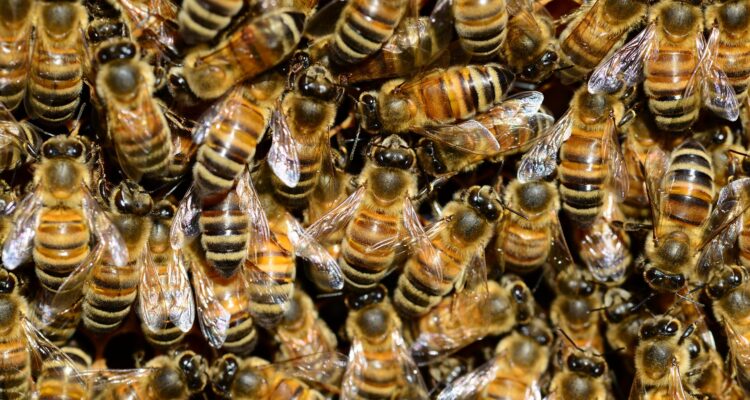
Arthropod bites are very common and, luckily, for most of us it is a self-limited nuisance, albeit a painful one. However, there are times when an insect sting can be a medical emergency usually due to a severe anaphylactic allergic reaction or rarely a massive envenomation from multiple stings. The focus of this article is on the stinging insects namely bees, wasps, hornets, fire ants and scorpions.
Bees (Apidae) are typically docile and only sting when provoked, threatened or cornered
Most stings occur on the extremities from accidental contact like the foot or hand. After a sting, the barbed stinger if still in the skin should be removed quickly to limit the amount of venom injected. Unfortunately, total envenomation only takes about 60 seconds. The best way to remove the barb is with a credit card’s flat edge tilted at a slight angle to the skin surface. Apply gentle pressure and sweep the card’s edge across the top of the stinger to dislodge it. Avoid using tweezers which would squeeze the bard and inject more venom. Although bee venom is not as potent as some of the other arthropods, anaphylactic reactions are more common from bee stings and potentially life threatening.
Wasps, Yellow Jackets and Hornets (Vespidae) are more aggressive than bees and are capable of multiple stings
They tend to be most abundant in the summer and autumn and can be found in swarms during those months making them all the more dangerous. The hornet has the most potent venom and can deliver the most venom per sting. Because of this multiple bites from a hornet or hornet swarm can result in a massive envenomation which can cause multisystem organ failure and even death.
Stinging ants (Formicidae), mostly the fire ant in the U.S
They have reddish-brown or black bodies and are average size for an ant (2-6 mm). They tend to swarm and sting in clusters, most commonly the lower extremities. People who are allergic to fire ants can have both an immediate reaction and a delayed reaction several minutes to hours and even days later. This is why if you are allergic to them it is best to go to the ER even if the immediate allergic reaction has resolved since there can be a delayed more severe reaction several minutes to hours later.
Treatment for most stings is the same except when there is an systemic allergic reaction
Always clean the bite with soap and water or alcohol. Then apply a cold compress followed by a topical or oral antihistamine (i.e. Benadryl) and a topical corticosteroid (i.e. hydrocortisone). Motrin, aleve or tylenol may also help if there is a lot of pain. If a systemic reaction occurs then an injection of epinephrine and corticosteroids is usually needed as soon as possible usually through a trip to the ER. For people that have had a severe allergic reaction is it best to see an allergist to get tested and desensitization immunotherapy to prevent a potentially future life-threatening sting.



